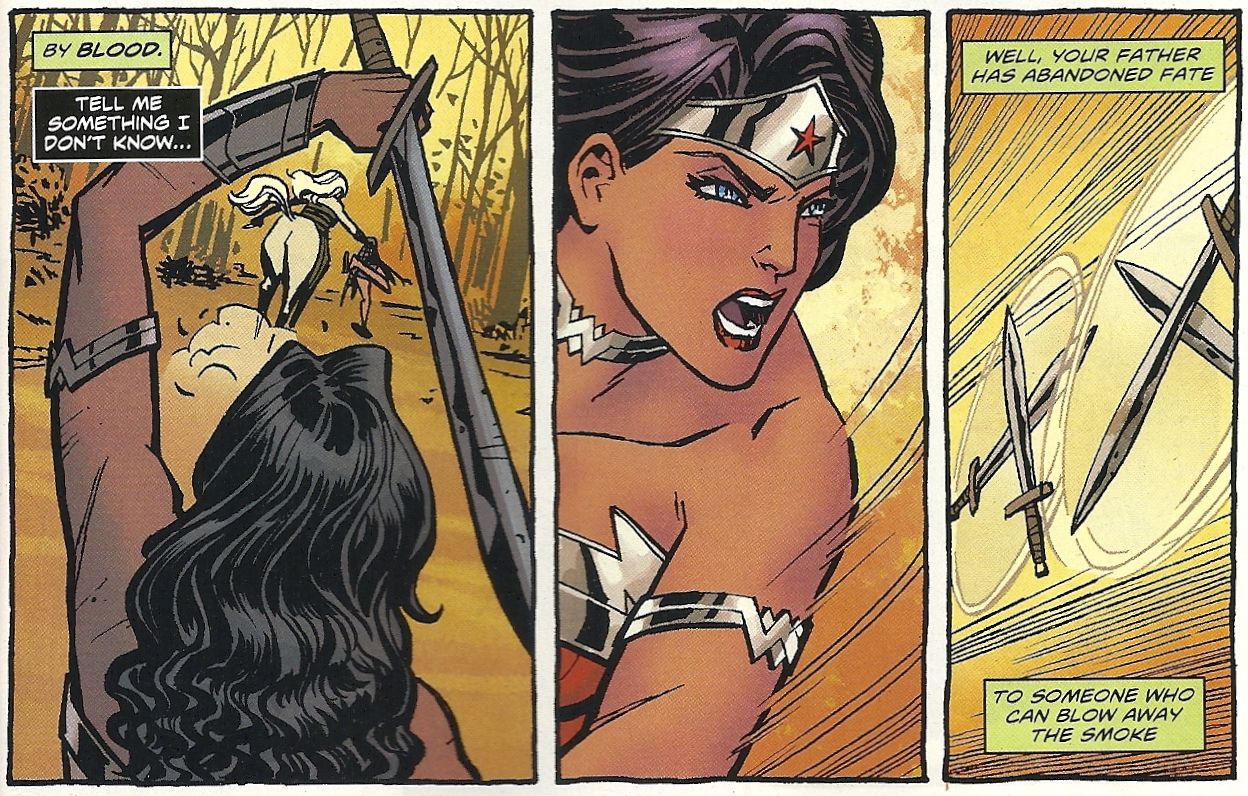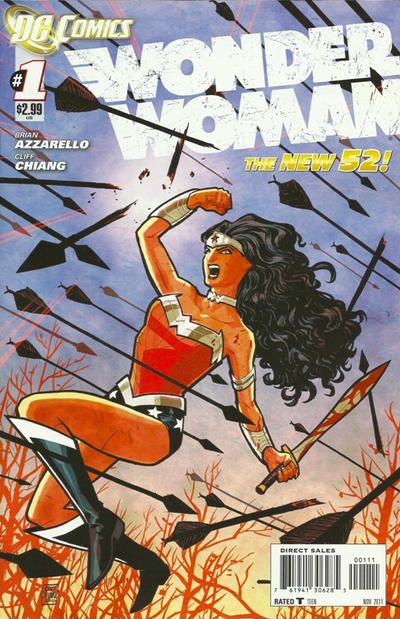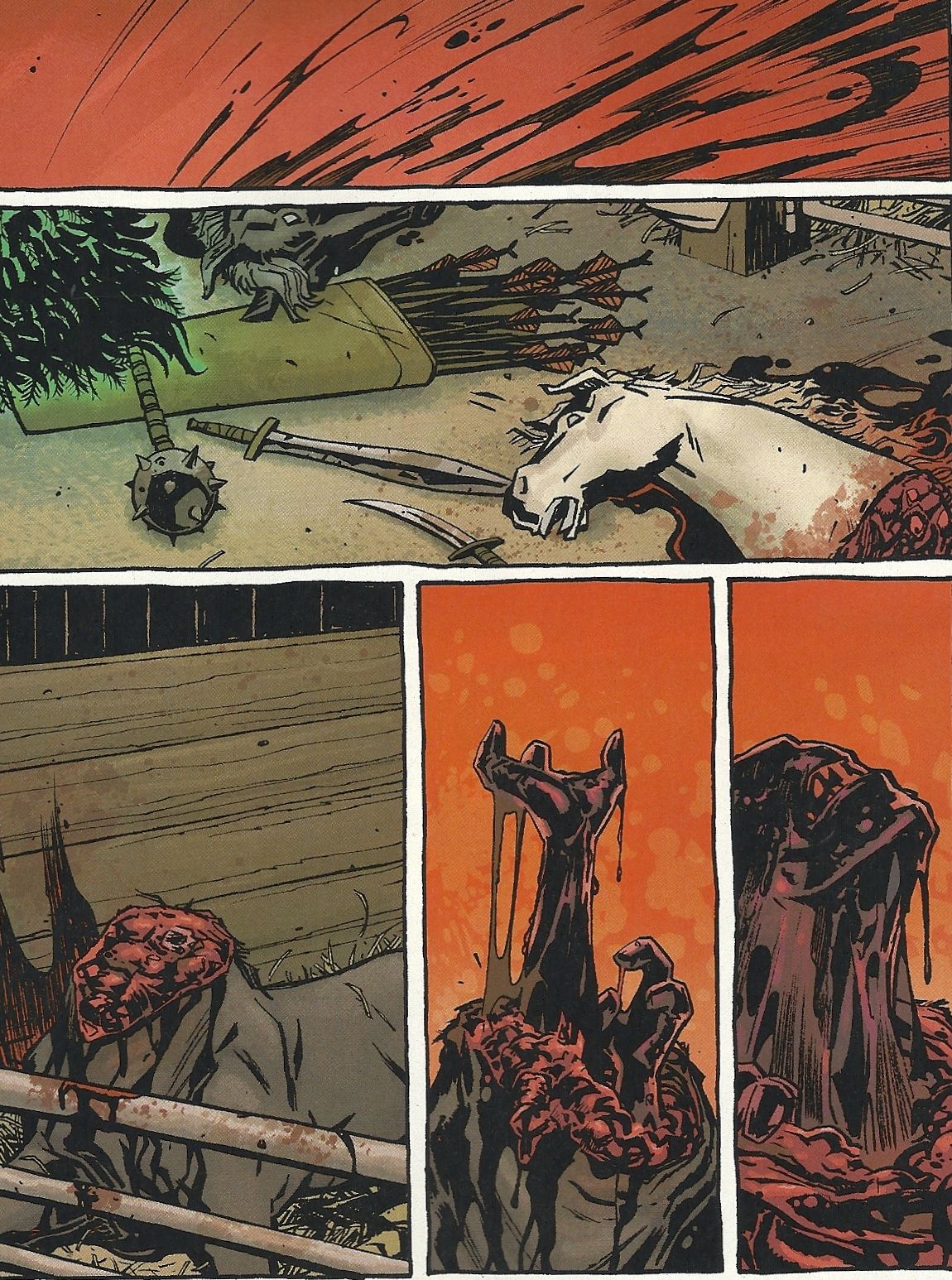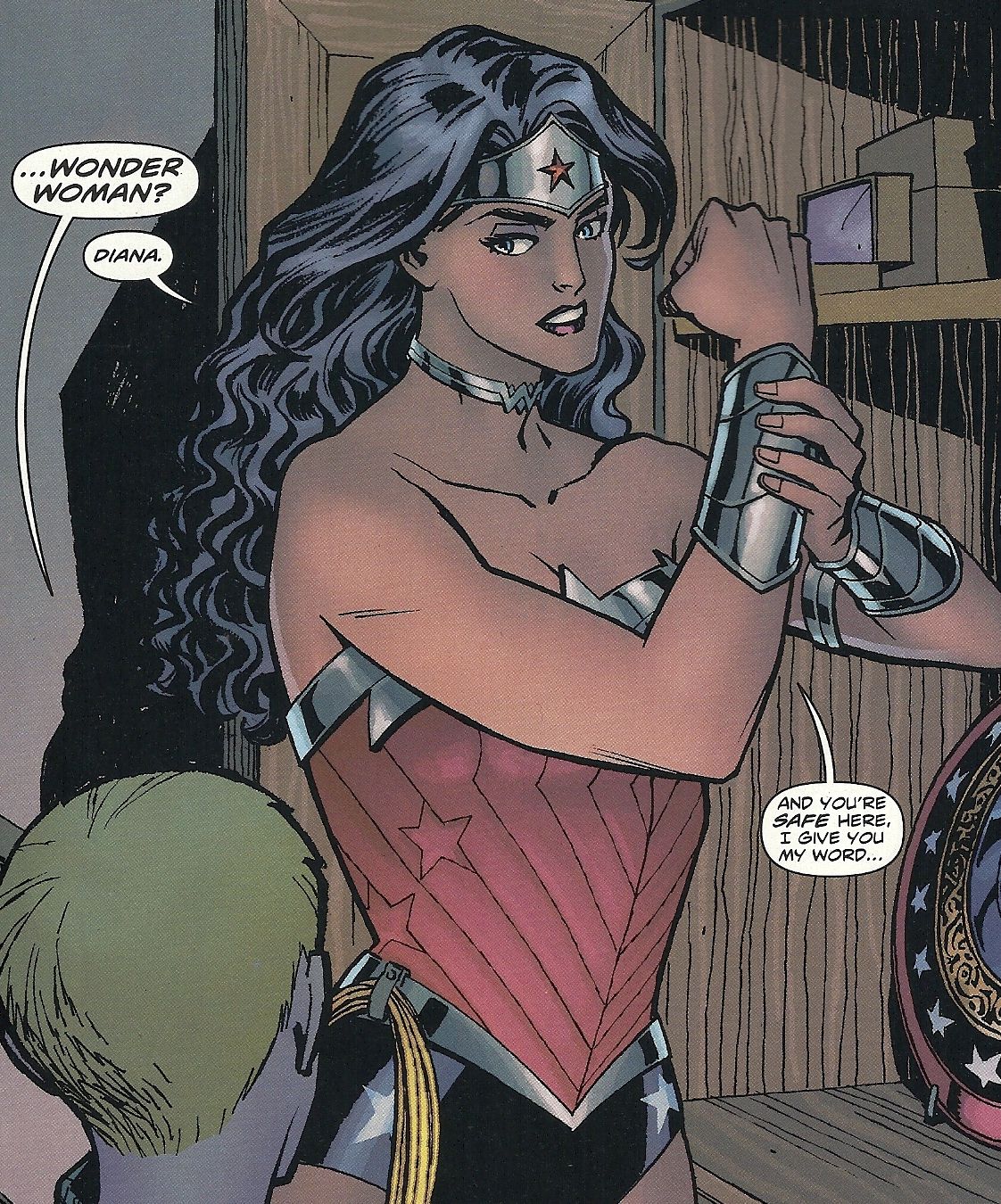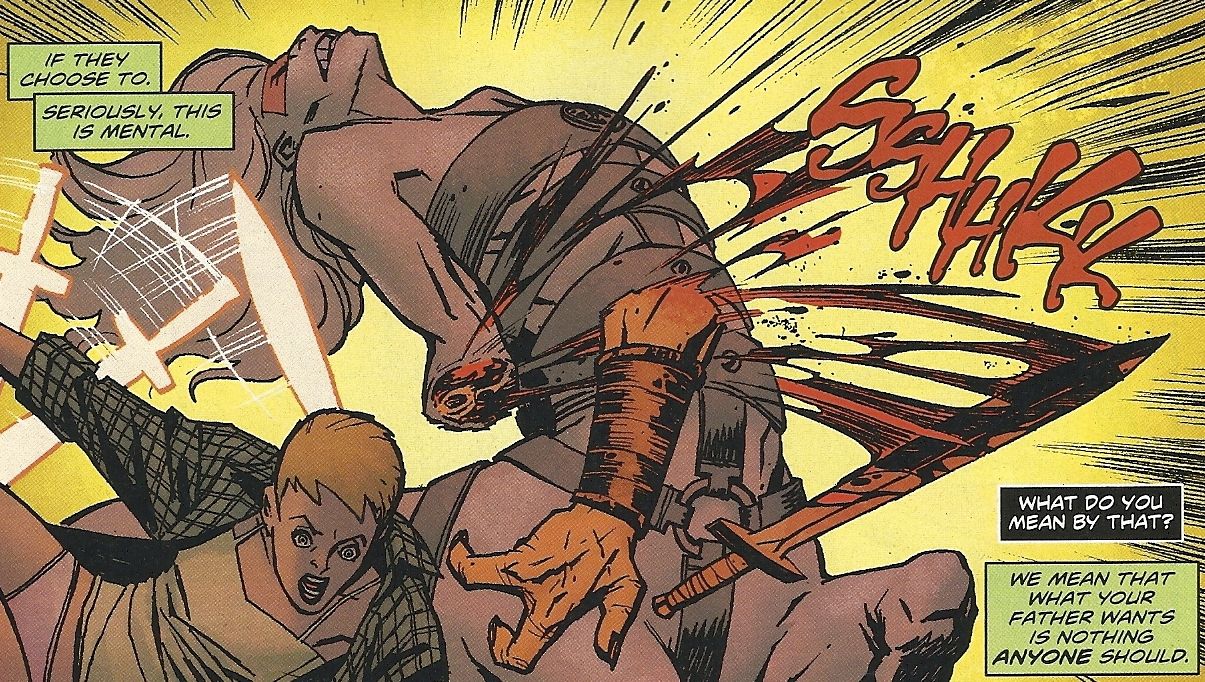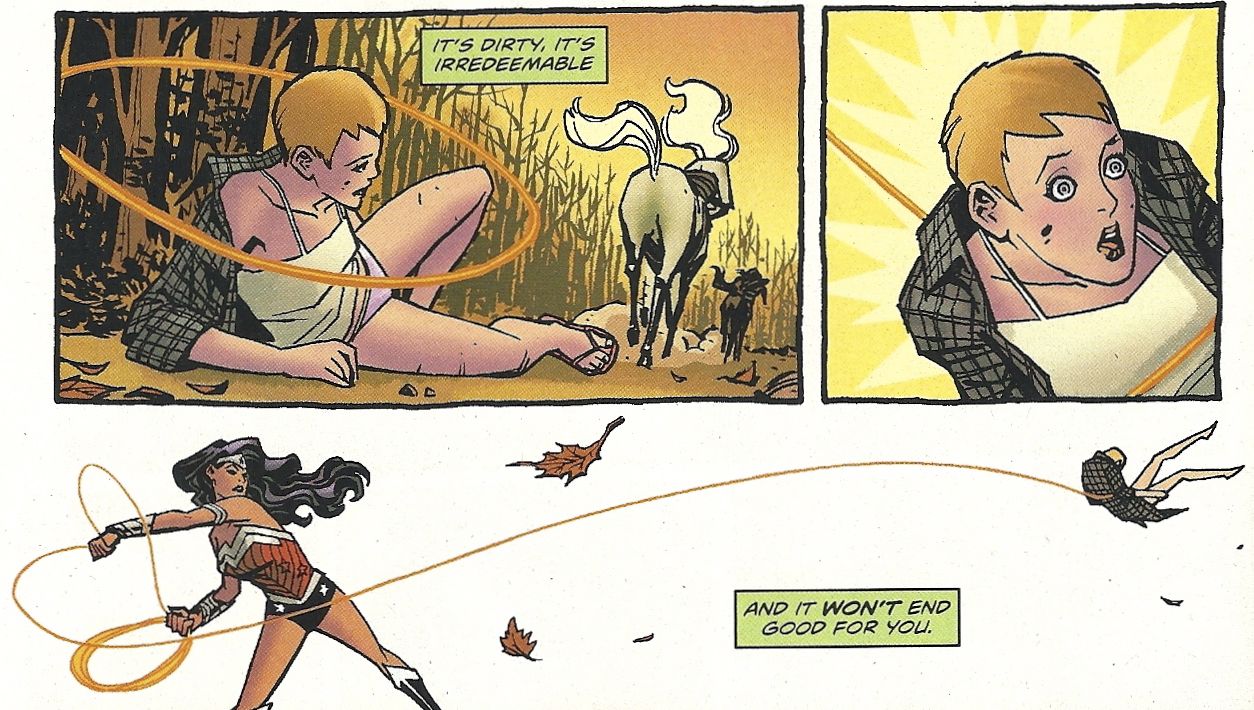Yesterday DC Comics released the first issue of its new Wonder Woman series, part of a reboot/relaunch of its entire superhero publishing line.
I like Wonder Woman. She’s one of the relatively few superheroes I genuinely root for. Not in a “I hope she defeats this villain” or “I hope she doesn’t get killed during the course of this dangerous adventure” sort of way, of course, because she is a superhero, and therefore always concludes her adventures safely and successfully.
Rather, I root for the character in the real world, in a “I hope this comic book of hers turns out good” or “I hope this is the take on Wonder Woman that catches on, and proves to folks that she’s just as good a character as Superman and Batman, her caretakers have just lost their way over the years.”
That’s why I get really excited when I see something like Ben Caldwell's too-crowded and laid-out but otherwise pitch-perfect Wednesday Comics strip, or proposals for YA and manga-influenced Wonder Woman comics from the likes of Caldwell and Tintin Pantojo or, hell, even just a really nice Wonder Woman drawing or character design in an unofficial venue (that is, one that’s not paid for and published by DC).
Personally, the release of Wonder Woman #1 was the comic of "The New 52" I was therefore most excited about.
As an observer of DC, I don’t think it’s the most important offering, which would probably have been Justice League, as DC’s flagship title and declaration of intent written and drawn by two-thirds of the folks responsible for the relaunch/reboot. And/or perhaps Action Comics and Detective Comics, as DC's two foundational books given historical renumberings as a sign of how serious the company is about starting over. And/or, from a fan perspective, even Batgirl, as a barometer of how the company would deal with continuity, which, in Barbara Gordon's case, was an anyway-you-look-at-it positive, rather than baggage (And baggage is how continuity is usually perceived, although I’d argue that perception really reflects an accumulation of bad stories, not the longevity of a narrative in general).
But Wonder Woman is a comic and concept badly in need a ground-up reinvention of the sort several characters seem to be getting (like Green Arrow, for example), as evidenced by the fits and starts of the title over the last few years, and DC’s noticeable confusion of what to do with her.
Let’s take a moment for a quick recap: Her position in the DC Universe was re-set after the mid-'80s Crisis On Infinite Earths, so that she began her hero career years after her peers; this caused domino-effect problems in other books that needed tinkering in the intervening years, until DC re-re-set her after the mid-aughts Infinite Crisis, and then kicked her out of continuity altogether for a while as part of the 2010-2011 J. Michael Straczynski-started, Phil Hester-finished last story arc of the previous volume.
In the last five years alone, here's what the publisher tried with the book: It launched a new Wonder Woman #1 by TV writer Allan Heinberg and artists Terry and Rachel Dodson in 2006, which lasted only four very-delayed issues, and then brought in superstar prose writer Jodi Picoult for five very-troubled issues (a big deal wasted by having Picoult work on a pre-ordained crossover event about the Amazons declaring war on the U.S.). Gail Simone then came on in 2008 for a 30-issue run with a variety of artists (Dodson, Aaron Lopresti, Bernard Chang, Nicola Scott), and then in 2010 DC renumbered the book with issue #600, redesigned Wonder Woman's costume among a media blitz, and kicked off a new direction by Straczynski and artist Don Kramer ... although the writer left after four issues to be replaced by Hester, and other pencilers and what look like dozens of inkers kept it going until last month's Issue 614.
This month the book would be getting another new start, a chance to break with the herky-jerky confusion of creative direction and perhaps even reach out to a new audience, as DC's executives have stated over and over is part of the goal of the reboot/relaunch. There was certainly reason to hope. The creative team for the new Wonder Woman was going to be Brian Azzarello and Cliff Chiang, the team responsible for Dr. 13: Architecture and Mortality, one of the all-around best super-comics DC has published in the last decade.
And of The New 52, Wonder Woman was one of several that was visibly still being tinkered with after the June announcement, as images of her on the cover of this issue and the cover of Justice League and other promotional images featured her wearing both long, black tights akin to those of the last, barely year-old Jim Lee redesign, and more traditional star-spangled shorts, now black instead of blue.
As it turns out, how much leg Wonder Woman was showing seems to have been the major point under consideration by DC Comics regarding reinventing her for the 21st century and a (hopefully) new audience. The new Wonder Woman is a very good comic book, but aside from better writing and better art, it’s the same Wonder Woman we’ve been seeing since at least the ‘90s. This is Wonder Woman as a cool, removed, flinty warrior who is always ready, willing and able to slay monsters and resolve conflicts with Wolverine-like violence.
The antagonists remain characters and creatures of Greek myth, here given a redesigns to appear more adapted to the modern world, and/or to simply look more weird and fantastical (Chiang’s Hermes, for example), but even that is something Greg Rucka and his artists were doing in their pre-Infinite Crisis run, and Marvel’s various Hercules comics have been delivering this same basic idea on a monthly basis for years now.
I made it all of five pages before I felt disappointment setting in. On the fourth page, a mysterious woman appears in a stable, holds a scythe aloft before a terrified horse, and then this appears on the fifth page of the T-rated book:
Wonder Woman herself appears five pages later; her first act is getting dressed in her new costume.
Nothing is made of why she’s wearing black instead of blue, or why she has more bling than usual, which is probably for the best. She just pulls the new costume out of her wardrobe and puts it on. People, even super-people, have a right to change clothes once in a while.
I don’t like the new costume at all, but I think we’re just going to have to get used to the fact that all of DC’s superheroes are going to have to wear ugly costumes for the next six months to a year or so. It doesn't make any sense to dress the characters in brand-new costumes if the effort is to attract lapsed readers and new readers (people familiar with the classic costumes form their constant presence in pop culture), but it does make sense as a signal to old readers that everything is going to be new and different now.
It’s far too busy, and the too-busy-ness is illustrated by the absurdity of Wonder Woman seemingly getting it and all of her many accessories on in the space of a few seconds of dialogue. The ribbed, plasticy look of the red portions of her costume, the excess stars on the side and even the big, busy bracelets make it look more like what a Hollywood costume designer would come up for a live-action Wonder Woman costume, more so than something a comic book character would wear.
I am glad they kept the shorts, though. Giving her pants seemed like an insecure, too sensitive, too teasing overreaction, along the lines of Superman and Batman losing their shorts because of the schoolyard peer pressure to do so.
The exact moment I lost hope for the all-new Wonder Woman to actually be an all-new Wonder Woman came at the climax of the next scene. Wonder Woman and Zola, a young woman the Olympians are taking an interest in (at least one of them a very violent interest in), return to her home to face a couple of centaurs.
Azzarello and Chiang create a great action scene, including a melee in which Wonder Woman and an opponent exchange blows, and she dispatches him with a unique, visually interesting maneuver.
But on the next page, as another centaur grabs Zola and runs away, Wonder Woman picks up a sword and hurls it:
This three-panel sequence occurs at the bottom of the page, and my heart sank when I saw it. I was practically pleading with the unturned, unseen next page not to show that sword embedding itself in the centaur’s back, or lopping off her head, or impaling her throat but to instead maybe hit her in the base of the skull with its blunt hilt and knock her out. You know, like Superman or Batman might do.
Instead:
So the “new” Wonder Woman is still the brutal warrior she has been, a loose cannon that doesn’t meet Superman and Batman’s loftier, softer rules of engagement. (Of course, given that this comic teaches us that centaurs spring up from the bodies of decapitated horses, maybe all that will happen to the dismembered centaur is that a pony’s head will grow out of her bloody stump next issue…?)
The scene is kind of galling because it’s so unnecessary, and the choice to include it therefore reads more like a declaration of tone than an integral part of the story. It’s followed in the very next panel with Wonder Woman employing her signature weapon, a long-range weapon that doesn’t cause anyone any harm and is ideal for stopping runaway four-legged creatures:
She had to chop that horse-lady’s arm off? She couldn’t have just lassoed her?
That disappointment registered, let me reiterate that this is still a pretty great comic. Chiang’s artwork is phenomenal. The pages are relatively packed with panels (this takes about five times as long to read as Justice League, for example), the borders of which are all drawn with artist-perfect rather than machine-perfect lines — you can see an ink-pen at work in the lines.
The figures are as smooth and expressive as one would expect from Chiang’s work. In motion or at rest they convey action and emotion, and the artist has mastered the basic stuff that still seems to elude far too many Marvel and DC artists, like the figures’ relationships to their backgrounds, or the passage of time and space between panels (Wondy’s above-mentioned quick-change aside).
Azzarello’s plot has familiar (overly familiar to this reader) elements, but the choice to treat Wonder Woman as just one more bizarre fantasy creature in a mysterious conflict in which gods and goddesses clash with modern, everyday settings instills her and her comic with a bit of mystery and fantasy that it’s been missing.
Wonder Woman’s biggest problem over the last few years, if you ask me, is that she tends to be somewhere between boring and insufferable as a character, so a break from her narration, from hearing her explain the world as she sees it, was refreshing—as was having action unfold before me, instead of it being relentlessly explained to me.
So while I’m saddened that DC Comics wasted yet another opportunity to "fix" Wonder Woman, to restore to her some of her unique personality and massive likability that began to diminish some 60 years ago with the death of her creator — perhaps the best chance they’ve had since Crisis On Infinite Earths, and the best one they’ll have for the foreseeable future — at least they got a good comic out of it. I liked this issue, and will happily read the next, but that doesn't mean I can't wish for an even better one.

